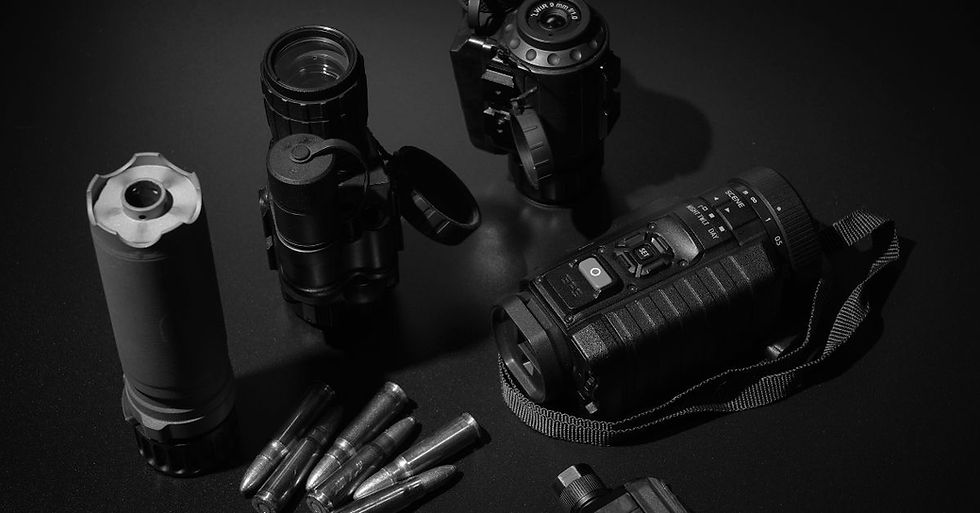
Circuit isolation is a critical component in power supplies that ensures operational efficiency and safety. By separating electrical circuits within devices, isolation protects users and equipment from potential hazards. Discover the reasons why circuit isolation is important in power supplies and how it impacts various fields.
The Principle of Isolation in Electrical Circuits
Circuit isolation acts as a barrier that prevents direct electrical connection between system sections, ensuring that each circuit functions independently. This separation occurs through transformers and opto-isolators, which transfer energy or signals without direct electrical contact.
The isolation process safeguards sensitive components from fluctuations in power supply, reducing the risk of short circuits. By enabling distinct pathways for electrical current, isolation contributes to the overall reliability and durability of the device. This principle is fundamental in designing power supplies that prioritize safety and performance.
Circuit Isolation Techniques
Several techniques, such as transformers, opto-isolators, and capacitive coupling, achieve circuit isolation. Each method offers unique advantages for different applications and design constraints.
Transformers provide robust isolation for high-power applications, while opto-isolators excel in signal transmission without electromagnetic interference. Meanwhile, capacitive coupling is effective in isolating high-frequency signals. Understanding these techniques allows engineers to select the most suitable isolation method, enhancing system performance and safety.
1. Safety
One of the primary benefits of circuit isolation is its ability to prevent electrical shocks, protecting users from hazardous voltages. Controlling electrical faults within isolated circuits minimizes the risk of equipment damage and potential failures.
This protective measure is vital in high-voltage microelectronics applications, where even small surges lead to significant malfunctions. The enhanced protection of an isolated circuit ensures engineers can handle high-voltage devices without worrying about an increased potential of electrical shock.
Additionally, isolation shields sensitive components from electrical noise and interference, maintaining integrity over time. User and equipment safety lays the foundation for reliable operation and boosts consumer confidence in the product.

2. System Efficiency
Circuit isolation plays a crucial role in optimizing power management within electrical systems. Isolation minimizes energy losses during transmission by allowing efficient distribution of electrical energy.
This improved efficiency reduces operational costs and extends the lifespan of power supply components. In high-voltage microelectronics, where miniature designs are prevalent, maintaining energy efficiency is vital for sustaining performance without overheating. With the ability to control energy flow precisely, circuit isolation is a key contributor to the system’s overall efficiency and sustainability.
3. Secure Voltage Conversion
Circuit isolation is crucial in securing voltage conversion processes, whether stepping down or up voltages within power supply systems. This security ensures that voltage adjustments occur without damaging sensitive components or altering signal integrity. By employing techniques like transformers and capacitive couplers, circuit isolation provides a controlled environment where voltages are modified to meet system requirements.
This precise control protects equipment such as solar panels from fluctuations and surges that could otherwise compromise performance. In high-voltage microelectronics, conversion reliability is paramount for maintaining efficient and effective operation across diverse applications, including industrial automation applications.
4. Noise Reduction and Signal Integrity
Isolation is instrumental in reducing electromagnetic interference (EMI), which can compromise electronic device signal integrity. Blocking unintended electrical noise ensures data signals remain clear and accurate, even in complex circuitry. This is particularly important in industries like aerospace and military, where precision in communication and control systems is nonnegotiable.
Maintaining signal clarity enhances the functionality and reliability of devices, facilitating better performance. Circuit isolation’s role in noise reduction creates reliable networks where messages transfer clearly, achieving seamless operation in advanced electronic systems.
5. Surge Protection
Surge protection is integral in maintaining the integrity and longevity of power supply systems, particularly in high-voltage environments. It operates by diverting excessive voltage from important components, preventing potential overvoltage damage caused by lightning strikes or power surges.
When integrated into circuit isolation strategies, surge protection acts as an additional layer of defense, enhancing overall system resilience. This is especially important in power grids that require a reliable power supply. Implementing adequate surge protection safeguards equipment and ensures electronic systems’ continuous, optimal performance.
6. Regulatory Compliance and Standards
Adhering to regulatory standards such as UL and IEC is imperative for manufacturers, and circuit isolation is a key factor in achieving compliance. These standards dictate the safety and performance criteria that electrical products must meet, guaranteeing they are fit for various applications. Circuit isolation is important in electrical circuits because it protects against electrical shock.
Manufacturers demonstrate their commitment to quality and safety with circuit isolation, which is crucial for market acceptance. Compliance with these standards protects consumers and opens doors to global market opportunities.
7. Role in High-Voltage Microelectronics
In the rapidly advancing field of high-voltage microelectronics, circuit isolation is indispensable for innovation and development. It enables the creation of miniature devices that are powerful and secure, meeting the demands of modern technology. Isolation techniques allow engineers to push the boundaries of design, incorporating high-voltage capabilities in compact form factors.
For instance, circuit isolation is vital for manufacturers of night vision components, as the opto-isolators ensure that light signals transfer to create a clear image. High-voltage microelectronics are also critical in applications where space and weight are constraints, such as aerospace and portable electronics. Circuit isolation thus supports the evolution of microelectronics, leading to groundbreaking advancements that shape the future.

8. Applications Across Industries
Circuit isolation is a versatile solution that finds applications across various industries, from consumer electronics to industrial machinery. In consumer electronics, it enhances device safety and performance, contributing to user satisfaction and loyalty.
In industrial settings, isolation ensures the reliable operation of machinery, even in harsh environments with fluctuating power supply. Its adaptability makes it a valuable asset in fields that require precision and durability, such as the medical field. The widespread use of circuit isolation improves its reputation and encourages its use in improving electronic system functionality.
Potential Risks of Inadequate Isolation
Neglecting proper circuit isolation leads to severe consequences, including equipment failure and compromised safety. Inadequate isolation results in electrical arcs and short circuits, posing risks to users and devices. The reliability of the entire system may be jeopardized, leading to increased maintenance costs, downtime, and hazards.
These risks have far-reaching implications in high-stakes industries like aerospace and military. Circuit isolation is important for maintaining the integrity and reliability of electronic systems, preventing failures that could otherwise be catastrophic.
Circuit isolation is a fundamental aspect of power supply design that enhances safety, efficiency, and performance across industries. Explore advanced isolation techniques to innovate and excel in high-voltage microelectronics.
If you need components for circuit isolation, HVM has you covered with cutting-edge solutions that drive your projects forward. Discover the power of reliable circuit isolation, and elevate your engineering endeavors to new heights.


コメント